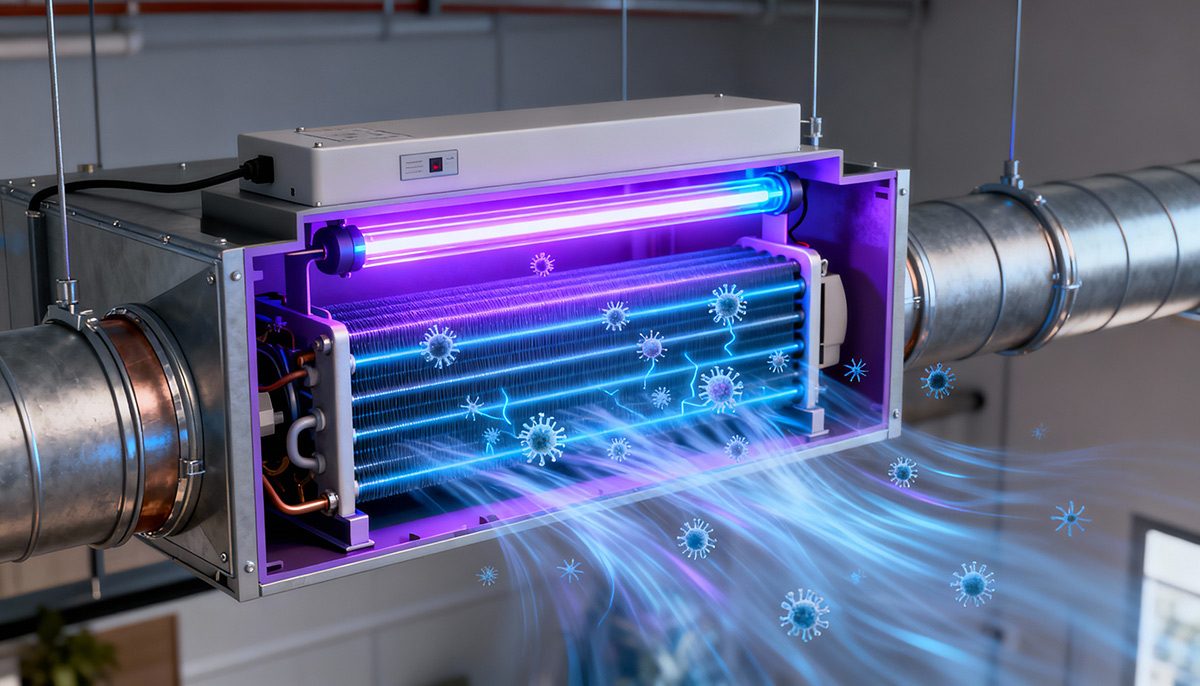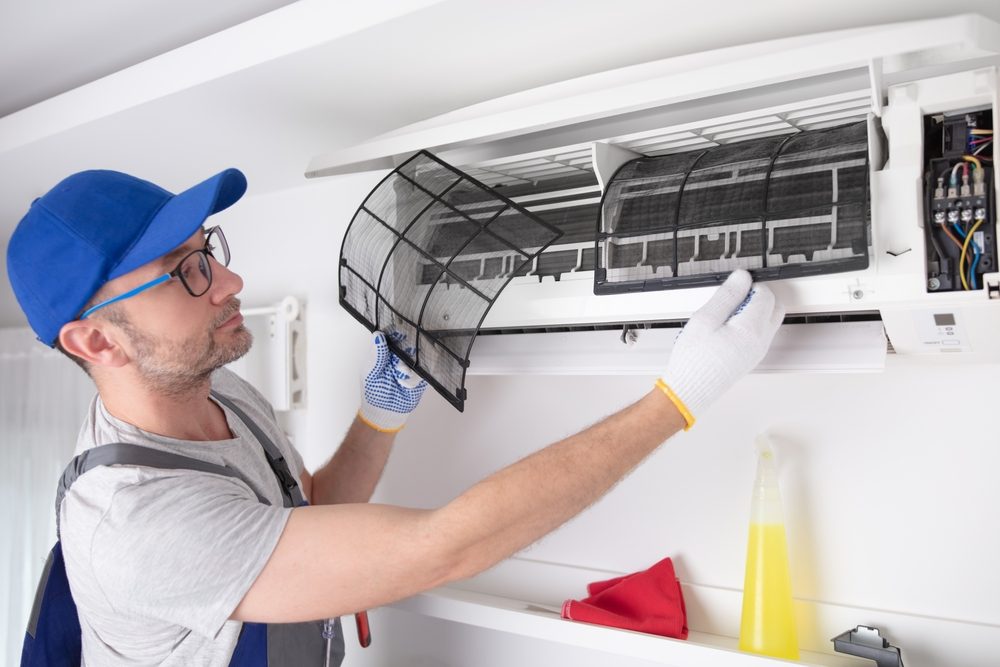
Thermostats are everywhere – in our homes, places of work, as well as in industrial settings. In this article, we’ll look at what you need to know about how a thermostat works, getting into the technology behind this essential device and how it helps regulate temperature in our homes and businesses. From traditional manual models to modern smart thermostats, we’ll explore what’s available, how exactly they work, as well as their many benefits. So let’s get started.
What is a thermostat?
If you look it up in a dictionary or encyclopedia, you’ll find something along these lines: A thermostat is a device designed to monitor and regulate temperature changes to keep an enclosed space at a stable level. They do this by automatically switching the supply of heat on and off within a limited temperature range.
But how exactly do they work?
How does a thermostat work?
Thermostats operate based on the principle of thermal expansion – the tendency of most materials to expand when heated and contract when cooled. Mechanical thermostats use this property to regulate temperature by controlling an electrical circuit, using either bimetallic strips or gas-filled bellows.
A traditional thermostat utilises a bimetallic strip, which has two different metals joined together. This strip acts as a kind of switch in an electrical circuit connected to a heating system. Under normal , the strip completes the circuit, allowing electricity to flow and keeping the heating on. As the strip heats up, one metal expands more than the other, causing it to bend. Eventually, the strip bends enough to break the circuit and cuts off the electricity and turns off the heating.
As the room cools, the strip contracts and gradually returns to its original shape. Once it reaches a certain point, it reconnects the circuit, bringing back the flow of electricity and switching the heating back on. Because the metal strip takes time to expand and contract, the heating system does not turn on and off every few seconds, preventing unnecessary fluctuations.
It’s worth noting that one drawback of bimetallic strip thermostats is their slow response to temperature changes, as the metal takes time to heat up and cool down. A more responsive alternative uses a pair of metal discs with a gas-filled bellows positioned between them. These corrugated discs have a large surface area, allowing them to react quickly to changes in temperature.
When the room temperature rises, the gas inside the bellows expands, pushing the discs apart. The inner disc then presses against a microswitch at the thermostat’s centre, breaking the circuit and turning off the heating. As the room cools, the gas contracts, pulling the discs back together. This causes the inner disc to move away from the microswitch, restoring the circuit and switching the heating back on.
Types of thermostats
Let’s look at the various types of thermostats:
Manual thermostats: Simple temperature control: Manual thermostats are the most basic type of temperature control that you’ll find. You have to adjust the settings manually and these models generally come in two forms: either mechanical or digital. Mechanical versions use a dial or slider for temperature adjustments while digital versions give a more precise temperature readout and have a slightly more refined level of control.
Programmable thermostats: Pre-set schedules for energy savings: Programmable thermostats bring in automation to temperature regulation. They mean homeowners can set specific schedules that control the temperature at different times of the day, helping to reduce energy consumption. There are various models within this category, offering flexibility based on household needs.
Smart thermostats: Wi-Fi-enabled features and remote control: Smart thermostats are the most advanced type available, with all the usual benefits of programmable thermostats but with additional Wi-Fi connectivity. These devices can be controlled remotely via a smartphone or computer, so users can adjust their home’s temperature from anywhere. Many models also include touchscreens, weather displays, and energy usage tracking features. Some smart thermostats even incorporate learning capabilities, adapting to your habits and preferences as a way of optimising temperature control based on occupancy and other factors. When part of HVAC system monitoring, these thermostats can detect potential issues with heating or cooling units and send alerts when maintenance or repairs are needed.
Benefits of using a thermostat
Let’s now break down the main benefits of using a thermostat:
Temperature control: One big feature of modern thermostats is their ability to maintain precise indoor temperatures. Unlike traditional manual models, today’s digital thermostats let you set your ideal temperature. So whether you prefer zoned heating or an even temperature throughout your home, a smart thermostat ensures your environment is exactly as you want it.
Energy efficiency: With everyone’s increased awareness of energy consumption, thermostats now play a key role in improving household efficiency. Programmable models are designed to optimise energy use by adjusting heating and cooling based on a person’s daily routine. These smart devices lower the temperature when you’re asleep or out of the house and then ensure a comfortable setting when you’re home. This means lower energy bills and a reduced carbon footprint.
Cost savings: Smart thermostats really can be a worthwhile investment, helping homeowners reduce their energy expenses. By optimising temperature settings, they prevent unnecessary heating or cooling, leading to significant savings – in fact, a well-managed thermostat can cut heating and cooling costs by up to 10% annually.
Remote access: Moving with the times, modern thermostats have evolved into smart devices that offer remote control via smartphones or computers. This feature is especially useful for last-minute changes or ensuring your home is at the perfect temperature upon your return.
Learning capabilities: Smart thermostats equipped with machine learning can take personalization to the next level. These advanced devices observe your temperature preferences and daily habits, then adjust settings automatically for optimal comfort. Over time, they fine-tune their programming to match your routine, so there is no longer any need for manual adjustments.
- Zoning: For homes where there are a variety of temperature needs, zoning provides a custom solution. This system divides the home into separate climate zones, each controlled independently. Whether you want a warmer living room or a cooler bedroom, zoning ensures every area is set to your preference. This mean better comfort and efficiency, reducing energy waste by heating or cooling only where needed. By integrating smart or programmable thermostats, zoning means a more tailored climate control experience for every part of your home.
About Daikin
Daikin’s advanced HVAC systems are designed to deliver optimal comfort by integrating heating, cooling, and ventilation into a unified solution. These systems create quiet, draft-free environments, maintaining air quality and energy efficiency without compromising on aesthetics.
With a strong commitment to sustainability and environmental responsibility, Daikin prioritises eco-friendly innovations that improve air quality. Employing over 98,000 people across 170 countries and operating 115 production facilities globally, Daikin is dedicated to building a healthier planet for future generations. Explore Daikin's cutting-edge air conditioning technologies and take a step toward a more sustainable future today.



